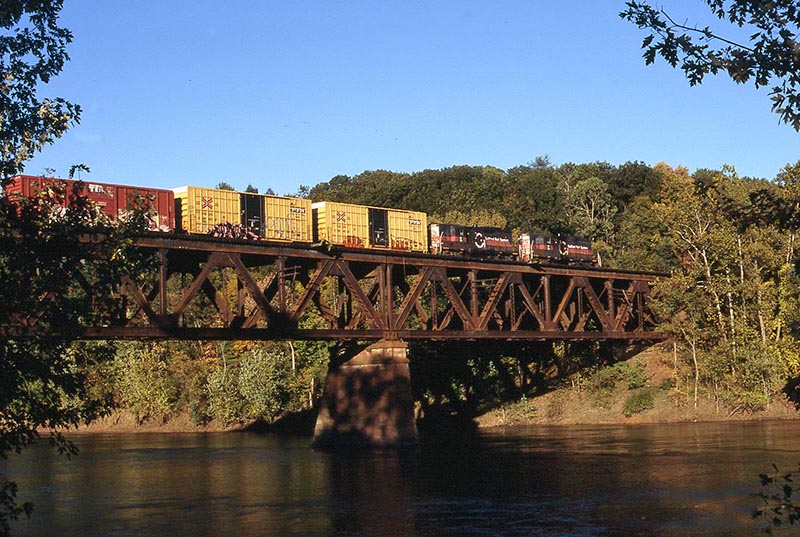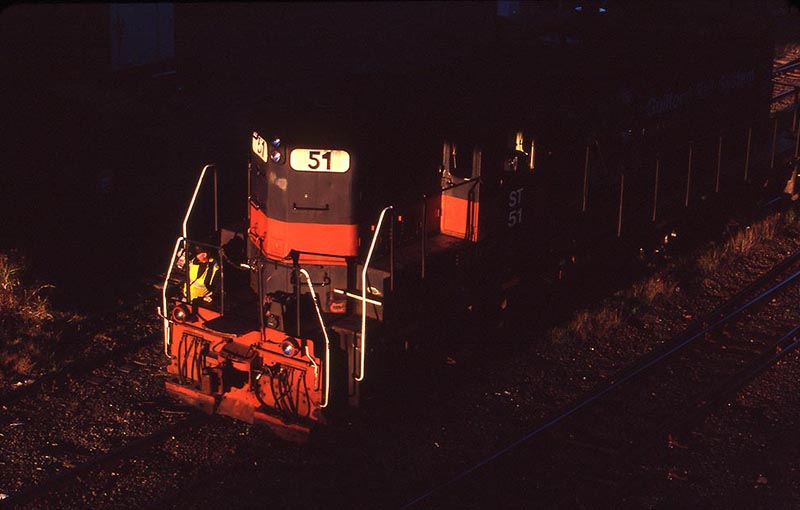By Otto M. Vondrak/photos by the author
Is the lowly GP9 worthy of praise? With all the charm of a battleship and the aesthetics to match, these unsung warhorses have all but disappeared from the American railroad landscape over the last 20 years.
With a production run of about 4,100 units built between 1954 and 1963, the GP9 road-switcher helped make Electro-Motive Division (EMD) of General Motors a leader in diesel locomotive production. If the streamlined carbody E’s and F’s of the postwar period were the “bait” for American railroads, then the rugged Geep series of the 1950s and 1960s set the hook. The Boston & Maine Railroad was certainly convinced, ordering 50 units to build up its freight-hauling fleet in the late 1950s. As we enter the second decade of the 21st century, those 50 units are now down to eight.
The fact that eight units remain on the roster is a miracle in itself. Many New England railroads struggled in the postwar economy as major sources of traffic relocated to the South to take advantage of cheaper operating costs. After struggling for a number of years, the Boston & Maine slipped into bankruptcy in 1970. Rather than throw in the towel, B&M’s management executed their own reorganization plan that rebuilt the physical plant, acquired new customers, and replaced the aging operating fleet. By the 1980s, the reinvigorated B&M made an attractive target for Timothy Mellon and his Guilford Transportation Industries. By 1983, the Maine Central and the Delaware & Hudson had joined the Boston & Maine under the same corporate umbrella.

Springfield Terminal 51 (ex-B&M 1825) and 52 (ex-B&M 1827) cross the Connecticut River with a cut of cars for East Deerfield Yard on December 22, 2010. As one of the few survivors of the old Boston & Maine diesel fleet, they are living out their end years in yard service.
While newer second-generation four- and six-axle power wiped out most of the original diesel fleet, a small number of the original GP9’s continued to soldier on. Relettered “Springfield Terminal” to reflect the new operating arrangements, the veteran EMD products continued to toil on their home turf. Mostly relegated to the branchlines of northern New Hampshire and Maine, they could sometimes be found in main line lash-ups hauling tonnage over the Berkshires to the railroad’s western connections. Another name change came in 2006, when Guilford gave way to the new “Pan Am Railways.” By 2011, only five GP9’s remain on the active roster, with three others stored out of service, providing parts so that others may live. With traffic on the upswing, these tired old units are proving to be useful in yard duty, freeing up newer engines for main line service.
Fifty-plus years is not a bad record for a diesel locomotive, especially when you consider that these units are still working for their original owner (more or less) and without a significant rebuild. Other major railroads relegated their Geeps to the scrap pile years ago, some awarded a reprieve by short lines or museums. Yet, they don’t seem too out of place on today’s Boston & Maine, er, Pan Am Railways.
With apologies to Scott Hartley, I had to borrow one of his titles that he used to describe the departure of the Alco from New England railroading a generation ago. Now the Geeps we took for granted have all but disappeared from the scene, unless you know where to look. Make a pilgrimage to East Deerfield, Mass., and listen for the chant of a non-turbocharged EMD 567 (it sounds so different from anything else today, you can’t miss it). These first-generation diesels continue to perform the duty asked of their owners when they first came on the property, no more, no less, and without fanfare… Praise is the least we can offer.
UPDATE: Pan Am Railways unceremoniously retired their last three GP9s in 2018 and subsequently sold the trio to the Heber Valley Railroad in Utah. In 2020, the 470 Railroad Club purchased former B&M 1741 from Heber Valley for preservation.
—Originally posted July 2011
Subscribe Today!




